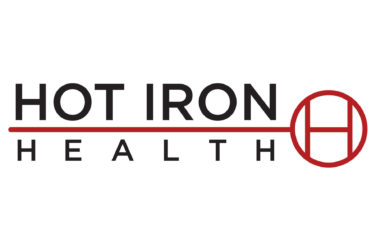In 2017, the World Bank and WHO released a report, which stated that at least 50% of the world’s population cannot afford basic health services, and that each year a large number of households are pushed into poverty because they have to pay from their pockets for healthcare.1
According to the CDC, up to 30% of new prescriptions are never filled at the pharmacy and abandonment reaches 69% for drugs with out-of-pocket costs of more than $250.
Medical expenses will continue to be a burden and a barrier to treatment for many patients. To help address this issue, brand marketers need to transition from providing standard reactive support initiatives to providing proactive experiences. This includes ways of ensuring patients and prescribers are fully aware of all the affordability programs that life sciences companies roll out with the goal of improving the overall health of individuals.
Considering that patient assistance programs enrollment is mostly sourced through prescribers, it is important to empower them with relevant information. The usage of programmatic messages to communicate with prescribers during their digital workflow can have an incredible impact that spans beyond a company’s business objectives. The automated interactions deployed by marketers can enhance the exchanges held with prescribers in a more proficient way to garner greater health outcomes for patients.
Trigger-based communication can help marketers preemptively notify HCPs about patient aid programs, copay cards, or discount coupons as they write a prescription through a point-of-care (POC) channel. It helps them pass on treatment assistance to patients by using this timely communication to their advantage.
Messaging HCPs Within Digital POC Platforms
To fully utilize the effectiveness of online communication with HCPs within POC platforms and continue to influence the care process, marketers must ensure their efforts are meeting the following criteria.
Enhancing treatment solutions: When designing communication for POC channels, marketers can identify diagnosis and therapy points, and accordingly they can tailor the messaging around those areas to address the financial needs that can be offered to patients through care providers. Empowering HCPs with relevant information also helps in improving the patient’s therapeutic experience. For instance, if an HCP writes a prescription for a patient’s ailment, a digital alert can be sent to the clinician informing them that their patient might be eligible for a copay card or other type of financial assistance program to help with the expense of their treatment. This will relieve the patient and assist them with the medical care costs.
Personalizing communication: Actionable communication programs are becoming more common on online platforms because they influence the decision-making process. The integration of digital technology into telehealth, Electronic Health Records (EHR), and e-prescribing (eRx) systems offers marketers a significant opportunity to push a suitable message to targeted customers and compete with other brands.
The use of these digital tools provides precise and valuable data points and helps marketers better understand the behavior of clinicians and tell whether a patient and their care providers are discussing a diagnosis or a course of treatment. It offers insights around when in an HCP’s clinical journey to share patient affordability messaging most efficiently as they tend to their patients. Therefore, in a competitive business, digital analytics helps marketers to embrace and comprehend an HCP’s behavior and enhance their messaging tactics.
Elevating patient outcomes: While the life sciences industry strives to lead in research, its future success will be supported by the services that businesses offer in addition to their therapies to promote better health outcomes. Effective communication between patients and their HCPs is necessary for successful therapeutic efficacy. To support and ensure clinicians feel connected with the brands, marketers must employ data analytics while creating a support program for POC platforms. The information associated with each stage of the campaign journey could be used to decide the kind of message that will improve the treatment experience and a company’s business purpose.
While marketers concentrate on creating messages, they also need to focus on their relevance and the timing because it will result in a better user experience while navigating the downward communication funnel.
Increasing access to healthcare: The rising cost of prescription drugs has created new barriers to medication adherence. Financial assistance programs aim to reduce economic burdens and increase access to healthcare. HCPs are keen on exploring patient support models that can help ensure medication adherence. To comprehend the requirements of clinicians and cater to them accordingly, marketers can analyze care providers’ intent behavior while creating messages. Such hyper-targeted marketing initiatives can increase consumer knowledge of a brand and foster trust between patients and HCPs.
Uplifting quality of care: To empower HCPs with value-based healthcare options on POC platforms, life sciences organizations must reorient their messaging around patients’ medication adherence objectives when developing support programs. Consistent information about a specific initiative on the POC platform can reduce the incremental cost of a new endeavor by sharing and reusing communication across the channels. To do this, marketers might employ an account-based marketing (ABM) strategy and target decision makers for the pertinent financial aid programs, which they can then share with patients, making it possible to improve quality of care.
Online platforms have transformed the way life sciences organizations connect with HCPs. However, marketers must learn more about the support that HCPs and patients are expecting from their brands. To address this, moving forward marketers should make the most of data insights to deliver financial assistance messages in a manner that provides decisive information at HCPs’ fingertips, improves health outcomes, and offers a better experience, which deepens the relationship between clinicians and patients, builds brand confidence, and achieves business objectives.
References:
1. “World Bank and WHO: Half the World Lacks Access to Essential Health Services, 100 Million Still Pushed into Extreme Poverty Because of Health Expenses.” World Health Organization. https://www.who.int/news/item/13-12-2017-world-bank-and-who-half-the-world-lacks-access-to-essential-health-services-100-million-still-pushed-into-extreme-poverty-because-of-health-expenses.









